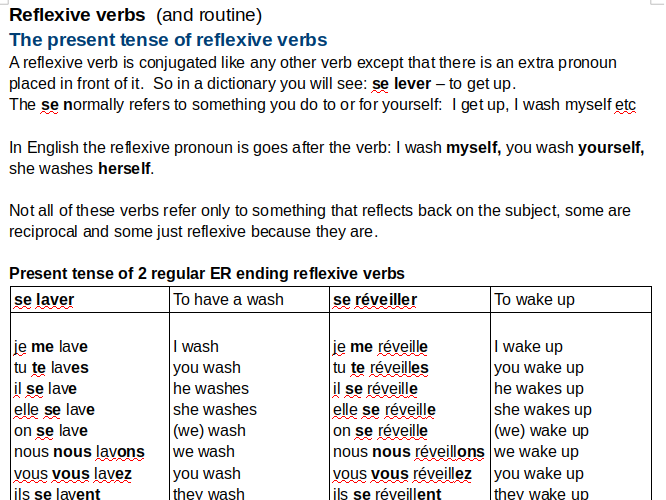
In German, the reflexive construction of verbs is a bit looser, though still more structured than English. To say "she reminds me of her mother", you must say me recuerda a su madre. The Spanish verb recordarse (to remind) is properly reflexive. However, there are still no shortage of regular verbs which can be made reflexive: help yourself, watch yourself, kill yourself, etc. In English, purely reflexive verbs have become rather rare - at the moment, the only one I can think of is to perjure onseself. Think of it as doing something to oneself. Properly reflexiveĪ properly reflexive verb is a verb for which the subject acts upon itself.

In general, I tend to group the first two together as self-reflecting actions of a subject, and the last three as passive actions with reduced or no emphasis on subject. There are five kinds of reflexive verbs: properly reflexive, reciprocal, autocausative, anticausative, and intransitive. As you will see, however, most other languages consider reflexiveness to be a quality of the verb rather than the object. Instead, we think of the self as an object pronoun. Grammatically speaking, a reflexive verb is a verb whose subject and direct object are the same, though we will find that there are some kinds of reflexive verbs which deemphasize the subject.īecause of the loose construction of reflection in English, we don't think of the verb as being reflexive. The name reflexive indicates that a verb reflects itself. If you dont understand it or have never heard of it before, then today is your lucky day because we're going to quickly look at what reflexive verbs are. The following table provides a sum-up of reflexive pronouns in Spanish.While the concept of reflexive verbs is mostly unused in English, it is a vital concept in almost all other languages. The pronoun indicates us that we are dealing with a reflexive verb. Unlike other verbs, reflexive verbs in Spanish will always be accompanied by a reflexive pronoun. In the first sentence, the action of washing falls on the dishes, while in the second, the action falls on myself.Ī very simple way to discover that we are dealing with a reflexive verb is to look at its structure. That is to say, it is not the same to say that “ estoy lavando los platos” (I am washing the dishes), than to say that “ estoy lavándome los dientes” (I am brushing my teeth).

We use reflexive verbs in Spanish when we want to tell about things that we do ourselves or other people, but in which the action is directly related to the subject.


Reflexive verbs are a type of transitive verbs (that is, verbs where someone does something: I read) but in this case, the action falls on the person who is doing it, on their body or on something they have or carry.


 0 kommentar(er)
0 kommentar(er)
